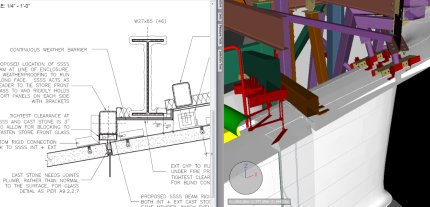Following up on some posts I’ve made referring to the importance of the BIM execution plan (BEP), I wanted to go a bit more high level and talk a bit about what exactly it is that this document is supposed to do.
There are 5 major questions a BEP must answer:
- What is the objective for BIM on this project?
- What process will we be implementing to achieve said objectives?
- What standard of performance must the model meet in order to meet said objectives?
- What is included in the model, and who is responsible for including it? (This is your MET)
- How are others allowed to use the model?
There are, of course, other elements that people can add to this, like legal disclaimers, but at the core, this is what we should see. Naturally, a process change can create friction and unease. The BEP should go a long way to clear up any open questions across the team. Done correctly – allowing people to comment and participate – the process of developing a BEP should result in a clear definition of the rules one must respect in order to play the game. Without it, everyone plays by their own rules and the aggregate is no better than the sum of its parts.
Another couple of points to take into consideration are model ownership and whether the model has been defined as a contract deliverable or not. These will also have a large impact on how the BEP is structured. Usually, ‘self driven’ BEPs are much less strict and allow room for interpretation. Whereas ‘imposed’ BEPs can be hyper specific and dictate many areas of both the processes and technologies. We see this with the large owners usually…
All in all then, I believe that we should look at models like in a similar manner than we do the buildings. Many resources and processes are dedicated to their development and the end product should be representative of those who made it in both quality and reliability. When working with other parties toward a common goal, setting forth clear expectations is only good project management.
Beyond this, most BEPs will have a pretty tactical breakout of process and deliverable requirements. Unfortunately, most people see this as a sort of checklist that needs to be filled out. This isn’t the case. Defining the objectives for a BIM process on a project can and does have a huge influence on project delivery and should not be taken lightly. This touches everything, from people to decision-making, to contract documents. Losing control over deliverables is never a good place to be…


